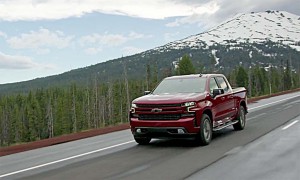
GM built up a large inventory of vehicles at its dealerships in anticipation of the strike, but it turns out it may not have been enough.
Even though UAW workers are back on the job after ratifying their new contract with General Motors, their six-week strike continues to create headaches – and not just for the largest of the domestic automakers.
Dealers are struggling to cope with customers who are, in many cases, discovering shortages of the most popular crossovers, SUVs and pickup trucks. While retailers say that some customers are willing to wait for the right Buick Enclave, Cadillac CT6 or GMC Sierra, others are walking over to the competition. That’s particularly problematic for Chevrolet, the bowtie brand struggling to regain its long-held position as the number two pickup in the face of an aggressive assault by Fiat Chrysler’s Ram brand.
Significantly, some hourly employees first started reporting back to work on Oct. 26, as the bitter, 40-day walkout came to an end. That was a Saturday, and it could be some time before employees – especially those in plants building GM’s hottest products – can plan on getting normal weekends back.
(GM workers heading to work as UAW shifts focus to Ford)
There are still some facilities, such as the one in Orion Twp., Michigan, making the Chevrolet Sonic and Bolt models, running well below capacity. But at key truck plants, it’s full speed ahead. The factory in Fort Wayne, Indiana, making Silverado and Sierra pickups is currently running 24 hours a day on three shifts, with two Saturdays on the schedule each month. That’s pretty much the norm, though the Flint, Michigan plant building heavy-duty versions of those trucks also has mandatory Sunday workdays in place through Dec. 21, according to the Detroit Free Press.

GM Chairman Mary Barra talks with workers at the company’s Fort Wayne truck plant, which is running 24 hours to meet demand.
“It’s going to be a struggle for a bit,” said Stephanie Brinley, principal analyst with IHS Markit.
In the weeks leading up to the strike that shuttered all of GM’s U.S. assembly plants, the automaker also was working an extended schedule. It had hoped to build up enough of an inventory to weather at least a brief walkout – a confrontation that had been widely expected considering the serious disagreements between labor and management, including GM’s decision to close two U.S. assembly plants.
Cox Automotive estimated the carmaker had about 77 days’ worth of inventory on hand, though that figure was a bit misleading. It had fewer slow-selling passenger cars but plenty of high-demand trucks. On average, there were enough CUVs, SUVs and pickups to handle 84 days of normal demand, with 93 days of Chevy Silverado pickups.
(UAW Workers Ratify GM Contract)
But, if anything, those plans were complicated by the ongoing surge in light truck demand. And, while automakers might traditional be willing to put up with the short-term impact of a strike by giving up some sales, Chevrolet was loathe to roll over and let Ram lock down its sudden position as number two in the U.S. pickup market, behind only the Ford F-Series. So, even with inventory dwindling, it tried to match competitors’ incentive programs – in some cases topping $10,000 a vehicle.
That price war isn’t easing up as GM plants get back to work, so, overtime is proving critical.

Despite building up inventory for the Silverado, but with so many variants, choices are quickly becoming limited.
“The bottom line is our customers cannot and will not wait any longer to make a purchase,” Flint Plant Manager Mike Perez and UAW Shop Chairman Eric Welter said in a note sent to Flint employees on November 27. “As a leadership team, we feel it is crucial to act now to identify a scheduling solution that will help feed market demand without compromising the quality and safety of our team.”
It’s not unusual for plants assembling hot products to schedule overtime, even when there hasn’t been a long strike. But the pressures on GM are particularly significant right now, especially as its two domestic rivals were able to finish negotiating their own contracts without confrontation.
(How might a GM strike impact customers?)
But it’s not just the need to replenish dealer lots that GM has to cope with, industry analysts caution. As Flint’s Perez stressed, the company also can’t afford to risk safety or quality. GM – and Chevy, in particular – has seen a sharp improvement in the quality and reliability of its products in recent years, something the bowtie brand is using as the centerpiece of its current national advertising campaign. Increasing production at the expense of quality would have its own long-term costs. Experts warn that workers will only be able to continue at the current pace for so long before something has to give.
